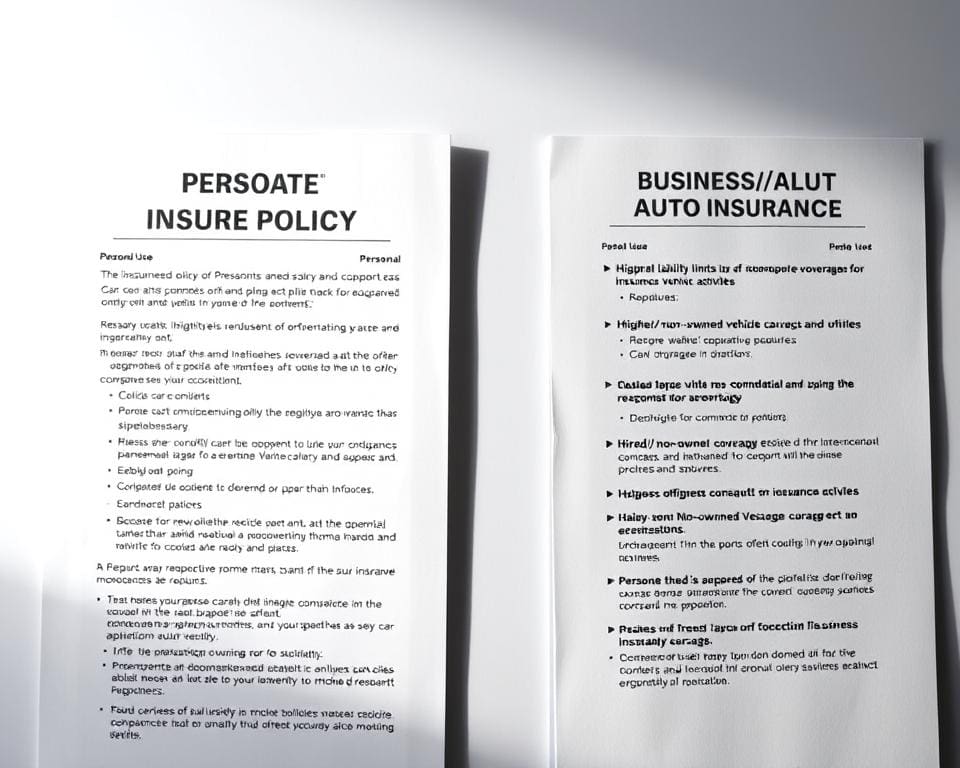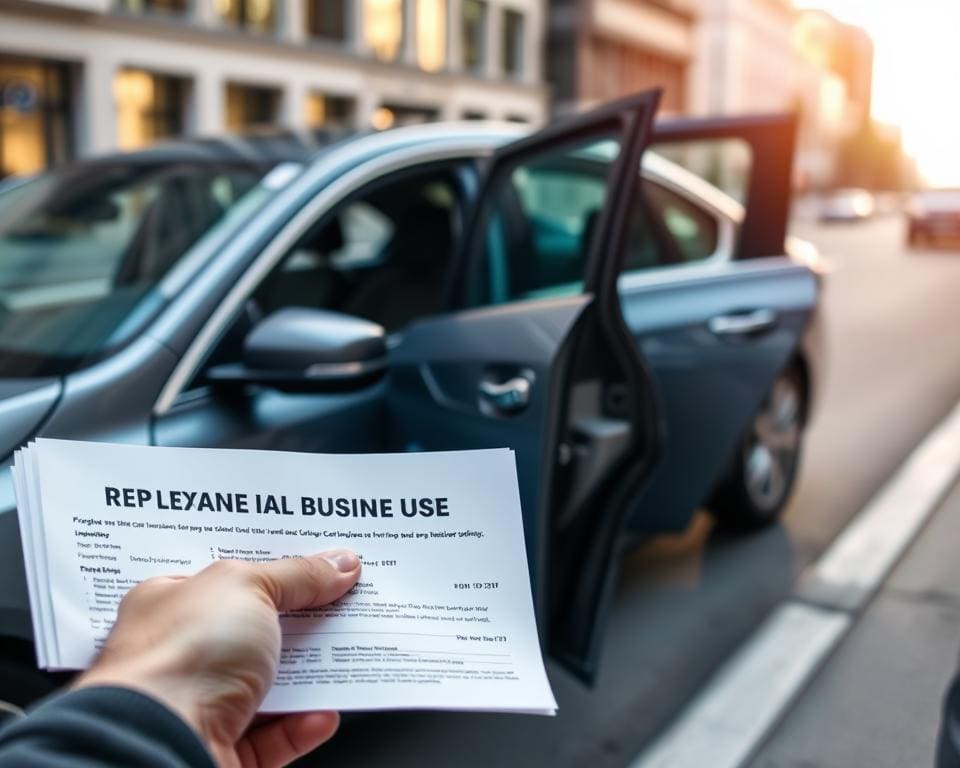In the dynamic world of business, ensuring that your vehicle is adequately insured for commercial use is crucial. Understanding how to change car insurance to business use can safeguard you from potential legal ramifications associated with insufficient coverage. The distinctions between personal and commercial driving needs are significant; therefore, switching car insurance for business purposes is not merely a formality but a necessity for those who use their vehicles primarily for work. Adequate protection allows you to focus on your business without the looming worry of being underinsured while driving for work commitments.
Understanding the Need for Business Car Insurance
The world of insurance can be complex, yet understanding it is crucial for anyone using a vehicle for business purposes. The differences between personal and business insurance are significant, influencing not only coverage but also overall peace of mind while driving for work-related tasks. Personal insurance typically caters to individual use, offering basic protection for everyday commutes and leisure driving. In contrast, business insurance encompasses a broader range of situations, accounting for the additional risks associated with commercial use.
Differences Between Personal and Business Use
When considering the differences between personal and business insurance, it’s important to note that business insurance usually includes enhanced liability coverage aimed at protecting against potential lawsuits stemming from accidents occurring during business activities. These policies often cover additional drivers, and allow for greater flexibility in vehicle usage. Furthermore, they protect the interests of employees who may operate company vehicles, ensuring responsibility extends beyond just the owner.
Reasons to Switch to Business Insurance
Evaluating reasons to switch to business insurance reveals various advantages that cater to commercial needs. Businesses may face legal obligations that necessitate a specific type of coverage. Additionally, business insurance often offers tailored features that can accommodate unique driving scenarios encountered while conducting business. Companies can also benefit from optimising protection against theft and damage, ultimately safeguarding valuable assets. Adjusting car insurance for business purposes ensures comprehensive coverage tailored to the dynamic environment of modern business.

How To Change Car Insurance To Business Use
Transitioning your car insurance to accommodate business needs requires careful consideration and some strategic planning. Understanding your current policy is essential, as this will ensure you can identify any limitations and potential coverage gaps. Once you’ve assessed your existing insurance, the next step involves pinpointing your specific business driving needs, which is crucial for modifying car insurance for business use effectively.
Assessing Your Current Policy
Begin by reviewing your current car insurance policy. Look closely at the coverage it provides and determine if it suits both personal and business requirements. Take note of any restrictions that may not meet the demands of business use, such as limits on mileage or specific vehicle use clauses. This assessment acts as the first step in your quest to learn how to change car insurance to business use.
Identifying Your Business Driving Needs
Consider the nature of your business activities. Reflect on questions such as:
- Will you frequently engage in long-distance travel?
- Do you require transportation for goods or clients?
- Will additional drivers need to be covered under the policy?
Understanding these needs is vital when you aim to update car insurance for business driving. This knowledge will guide you in the process of modifying car insurance for business use in a way that aligns closely with your operational requirements.
Steps to Modify Car Insurance for Business Purposes
Transitioning to a business car insurance policy can seem daunting. Following a systematic approach simplifies the process significantly. Start by gathering essential documentation and engaging with your insurance provider to ensure a smooth transition.
Gather Necessary Documentation
Before altering car insurance for commercial use, compile the necessary paperwork. This documentation should include:
- Proof of business registration
- Details of employee drivers, if applicable
- Records of any previous insurance claims
Having these items ready will facilitate the conversion process. This preparation helps in accurately converting car insurance to a business policy, tailoring it to meet your specific needs.
Contact Your Current Insurance Provider
Once documentation is in place, reach out to your current insurance provider. Clearly communicate your intention to shift car insurance to a business plan. Discuss your unique business needs, including the type of usage and any additional coverage requirements. This dialogue enables the provider to make appropriate adjustments to your policy, ensuring comprehensive coverage that aligns with your business activities.
Choosing the Right Insurance Provider
When making the transition to a business insurance policy, it is essential to focus on choosing the right insurance provider. A thoughtful selection can lead to significant benefits for your business while safeguarding your investment. Consider various factors that influence your choice, which can greatly impact your coverage and peace of mind.
Factors to Consider When Switching
Prior to switching providers, evaluate the following aspects:
- Reputation of the Insurer: Research the insurer’s track record and credibility within the industry.
- Coverage Options: Ensure the policy meets all the necessary requirements for your business needs.
- Customer Reviews: Look for feedback from other clients to gauge their experiences.
- Claims Process: Understand how straightforward it is to file claims and the typical response times.
Comparing Business Insurance Quotes
Comparing business insurance quotes is a crucial step in finding the most suitable coverage. Take time to review various policies available in the market. Focus on:
- Identifying essential coverage requirements.
- Understanding what is included and excluded in each quote.
- Looking for potential discounts or bundled options that may apply.
- Amending your car insurance for business needs to align with the selected provider.
Updating Details for Accurate Business Coverage
When transitioning to business car insurance, accuracy in reporting your driving habits and needs is essential. Regularly updating car insurance for business coverage ensures that your policy aligns with the reality of your operations. Proper adjustments can prevent complications in the event of a claim.
Adjusting Your Driving Distance and Usage
As a business owner, your driving patterns may vary significantly from personal use. It is crucial to evaluate and adjust your driving distance and usage continuously. This could involve shifting from casual trips to more frequent journeys related to your work commitments. Keeping your insurer informed about these changes reflects your true business operations and is vital for maintaining adequate coverage.
Informing Your Insurer About Additional Drivers
Another key aspect of updating your policy involves informing your insurer about additional drivers. If colleagues or employees will be operating the vehicle for business purposes, notifying your insurance provider is imperative. This step not only ensures that all individuals driving the vehicle are covered but also protects you from potential liabilities. Being transparent about who uses the car fosters trust and prevents misunderstandings during claims.
Transforming Personal Policies to Business Plans
Shifting from personal insurance to business coverage requires more than a simple name change on a policy. Understanding policy limits and coverage options presents a unique opportunity to tailor insurance to the specific needs of a business. Recognising the essential elements of coverage can lead to thoughtful decisions that align with business goals.
Understanding Policy Limits and Coverage Options
When transforming personal policies to business plans, it is vital to grasp the concept of policy limits. These limits define the maximum payout in the event of a claim, influencing financial protection significantly. Business use often elevates risk, necessitating higher limits compared to personal coverage.
Furthermore, exploring various coverage options becomes paramount. Understanding how different policies protect against factors like liability, theft, or damage to goods in transit can ensure comprehensive risk management. Tailored policies that reflect the nature of your business can result in cost savings and enhanced protection.
Benefits of a Comprehensive Business Policy
The benefits of a comprehensive business policy manifest in multiple ways. Enhanced protection against liability issues stands out, safeguarding assets from unexpected claims. Extensive coverage for goods in transit prevents financial loss during delivery processes, a common concern for businesses reliant on logistics.
Additionally, businesses enjoy a more tailored insurance package that caters specifically to their operational needs. This bespoke approach fosters peace of mind, allowing owners to focus on growth and innovation. In essence, adopting comprehensive business policies plays a crucial role in sustainable success.
Common Mistakes to Avoid When Switching
Switching car insurance to align with business use is a crucial step for safeguarding both your vehicle and your finances. Awareness of common mistakes to avoid when switching insurance can enhance your transition and ensure optimal coverage. Many individuals face challenges that can be easily navigated with informed decisions.
Underestimating Coverage Needs
One prevalent mistake involves underestimating coverage needs. When transitioning to business insurance, many fail to evaluate the specific requirements associated with their operations. This oversight can lead to insufficient protection in the event of an accident or loss. Assessing your unique driving patterns, the nature of your business activities, and potential risks can enable you to select appropriate coverage levels tailored to your situation.
Neglecting to Inform Insurer of Regular Changes
Another critical pitfall is neglecting to inform the insurer about regular changes in your business. This includes updates on new vehicles, additional drivers, or alterations in your business model. Failing to provide this information can create significant coverage gaps, exposing you to potential liabilities and financial setbacks. Regular communication with your insurer is essential to maintaining comprehensive protection tailored to the evolving nature of your business.
Benefits of Altering Car Insurance for Commercial Use
Transitioning to business insurance offers numerous advantages that can significantly impact the way you operate your business. One of the key benefits of altering car insurance for commercial use is the enhanced liability coverage designed specifically for business needs. This ensures that if an incident occurs while using your vehicle for work purposes, you’re not left exposed to unforeseen costs, allowing you to focus on what truly matters—growing your enterprise.
Moreover, improved protection for business vehicles means that your assets are safeguarded against a broader range of risks. Business insurance policies often include coverage for equipment and tools transported in your vehicle, which means that your essential resources are protected. This not only secures your financial future but also enhances overall business operations, providing peace of mind as you navigate your day-to-day activities.
In summary, the advantages of business insurance extend beyond mere financial safety; they contribute to a more robust and secure framework for your operations. By ensuring adequate coverage tailored to your specific driving needs, you’re better equipped to handle the challenges of the business landscape, ultimately setting the stage for sustained success and growth.









